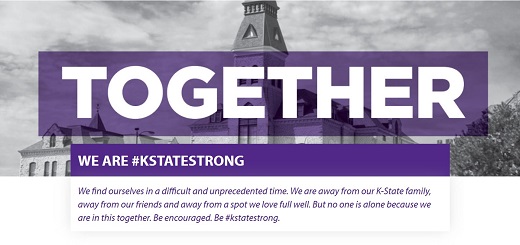05/27/20
K-State Current - May 27, 2020
K-State Current is a weekly news update for the Kansas Board of Regents to apprise the Regents on a few of the many successes and achievements made by K-State faculty, staff and students.
K-State News
Visit K-State’s “We Are #KStateStrong” site to view brief videos designed to keep the K-State family engaged, connected and inspired during these challenging times.
Op-ed: Discipline and strength required to vanquish pandemic foe
Editor's note: The following commentary was prepared by Kansas State University President Richard B. Myers.
 The pandemic is a difficult experience for all of us. The longer it goes on, the harder it gets to stay disciplined. The good news is that we are making progress in limiting the impact of the virus and communities are starting to relax restrictions in phases. This does not mean that we have reached the finish line. The medical experts warn that we are a long way from defeating this disease. The most important thing now is to maintain our discipline. This is tough as we are all tired of living in a world where we can't have the social interaction we desire.
The pandemic is a difficult experience for all of us. The longer it goes on, the harder it gets to stay disciplined. The good news is that we are making progress in limiting the impact of the virus and communities are starting to relax restrictions in phases. This does not mean that we have reached the finish line. The medical experts warn that we are a long way from defeating this disease. The most important thing now is to maintain our discipline. This is tough as we are all tired of living in a world where we can't have the social interaction we desire.
It is our individual discipline that has gotten us to where we are today. If we lose self-regulation, we risk going backward and winding up in a more restrictive situation. Just what we don't want. I have often seen this in my 40-year military career, where given life or death situations, or with mission accomplishment on the line, some did not have the discipline or willpower to continue doing what had kept them and their colleagues safe. When discipline broke down in these situations, the outcome was predictable and dire.
Our ultimate success is also a measure of our own compassion. Noted columnist and author David Brooks stated on "PBS NewsHour" on April 17 the way to overcome this pandemic is to exhibit social solidarity and surrender to the common good. This is not easy in America, where our individualism is prized. But when we are all challenged by a complex virus, we have to come together in ways that we have not had to do for most of our lives. We have to follow state and community guidelines. Yes it is tough, but it is the only rational choice.
Kansas State University has an important mission. It is critical to individual success and the economic health of our nation. We want to return to in-person classes as soon as possible. Please be a part of the solution by staying mentally tough and disciplined. We are only as strong as our weakest link — none of us want to be the weak link that pushes us back to greater restrictions.
We started early in the pandemic urging our students, faculty and staff to be "K-State Strong." Their resiliency has been amazing. Now is the time for all of us to stay disciplined and strong for the sake of each other.
Richard B. Myers is the president of Kansas State University. From 2001-2005, he served as the 15th chairman of the Joint Chiefs of Staff and was the principal military adviser to the U.S. president, secretary of defense, and the National Security Council.
Rising from the ashes: the two-year anniversary of the Hale Library fire
Two years ago, on May 22, 2018 at 4 p.m., things at Hale Library changed forever.
The fire and the resulting damage from water and smoke impacted several sections of the library, including Historic Farrell Library and the Great Room. As a result, nearly 130 employees found themselves out of their regular workspace and into more than 13 temporary work spaces throughout campus.
As a way of recognizing the immense progress that has been made in the two years since the fire, we wanted to share photos that show the tremendous progress we’ve made. As we get closer and closer to completing the renovation and restoration of the library, we hope you find as much inspiration from these photos as we do.
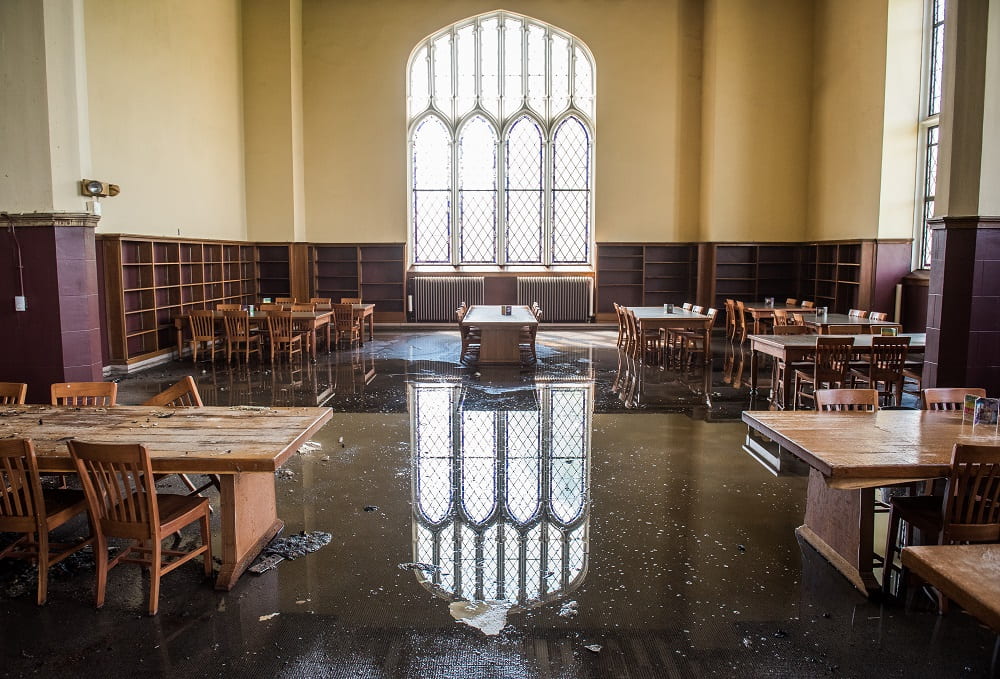

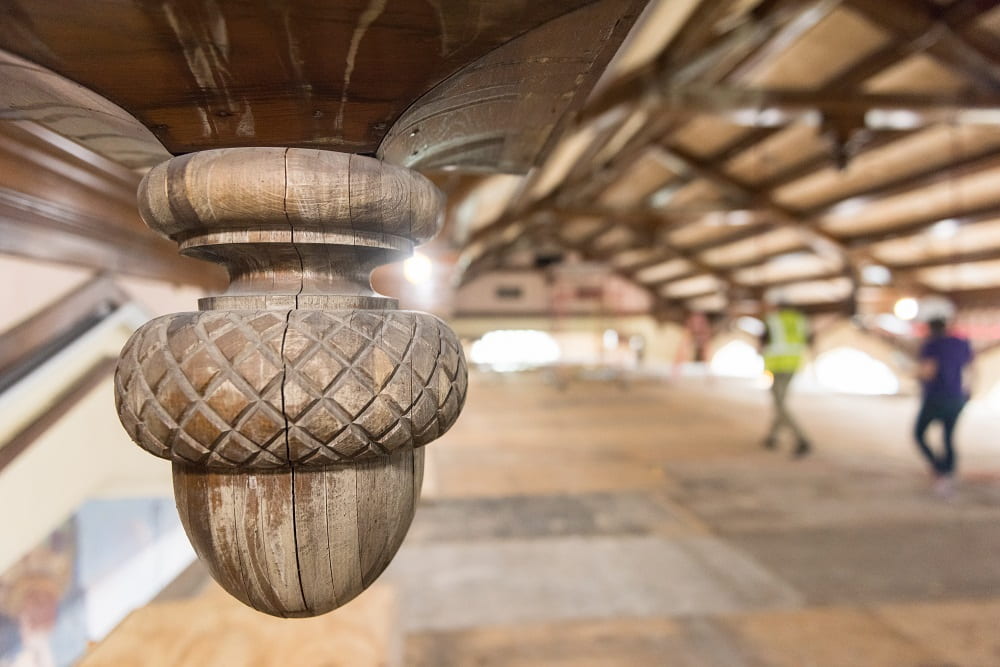
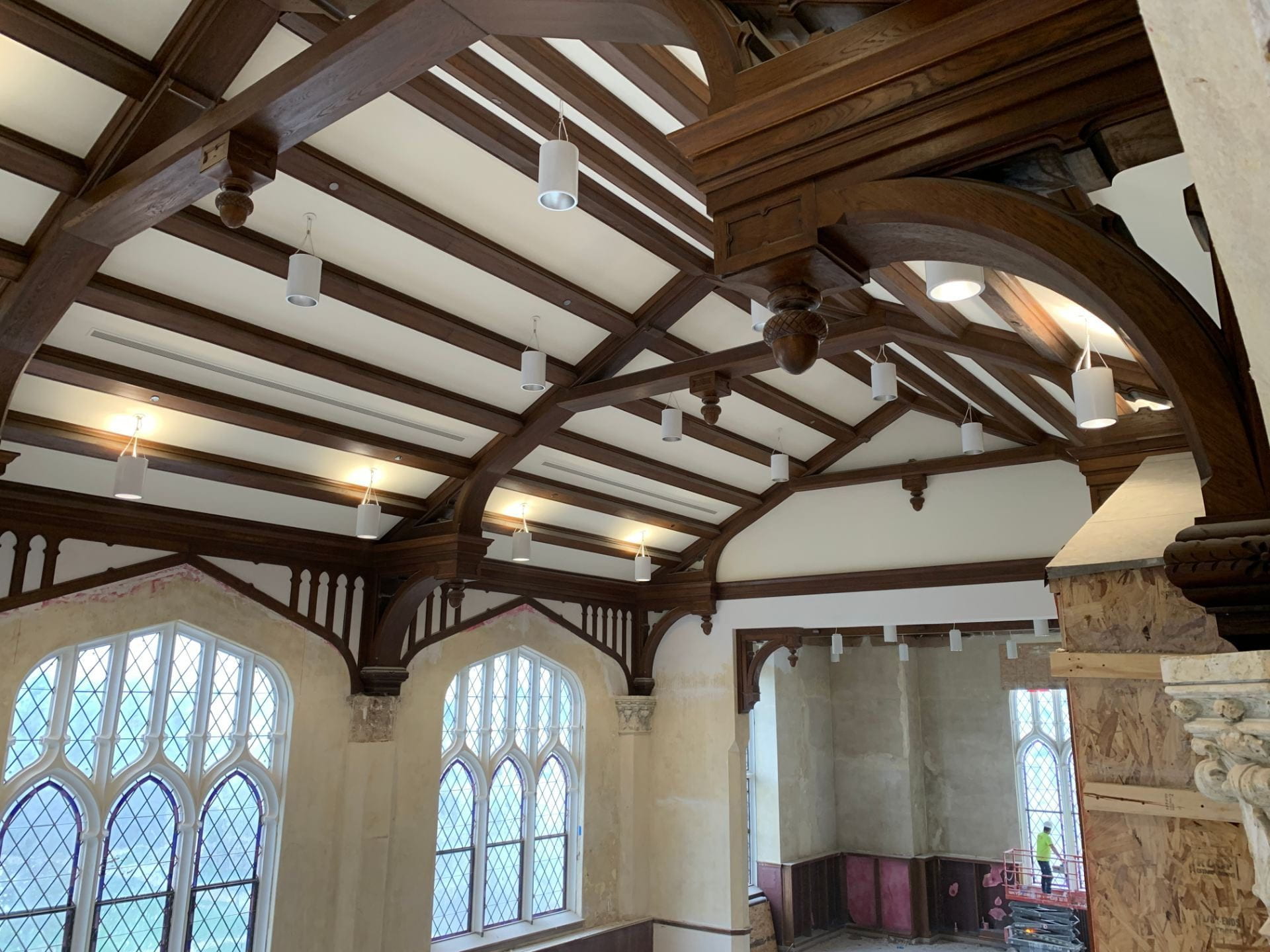
The catastrophic damage to the library was a hit to the entire K-State community, as Hale Library is often viewed as the heart of campus, and a place where everyone is welcome to share a quiet moment of reflection or study. At the time, it seemed that the incredible task of restoring the 550,000-square-foot building would be the greatest challenge the library and its staff have ever faced.
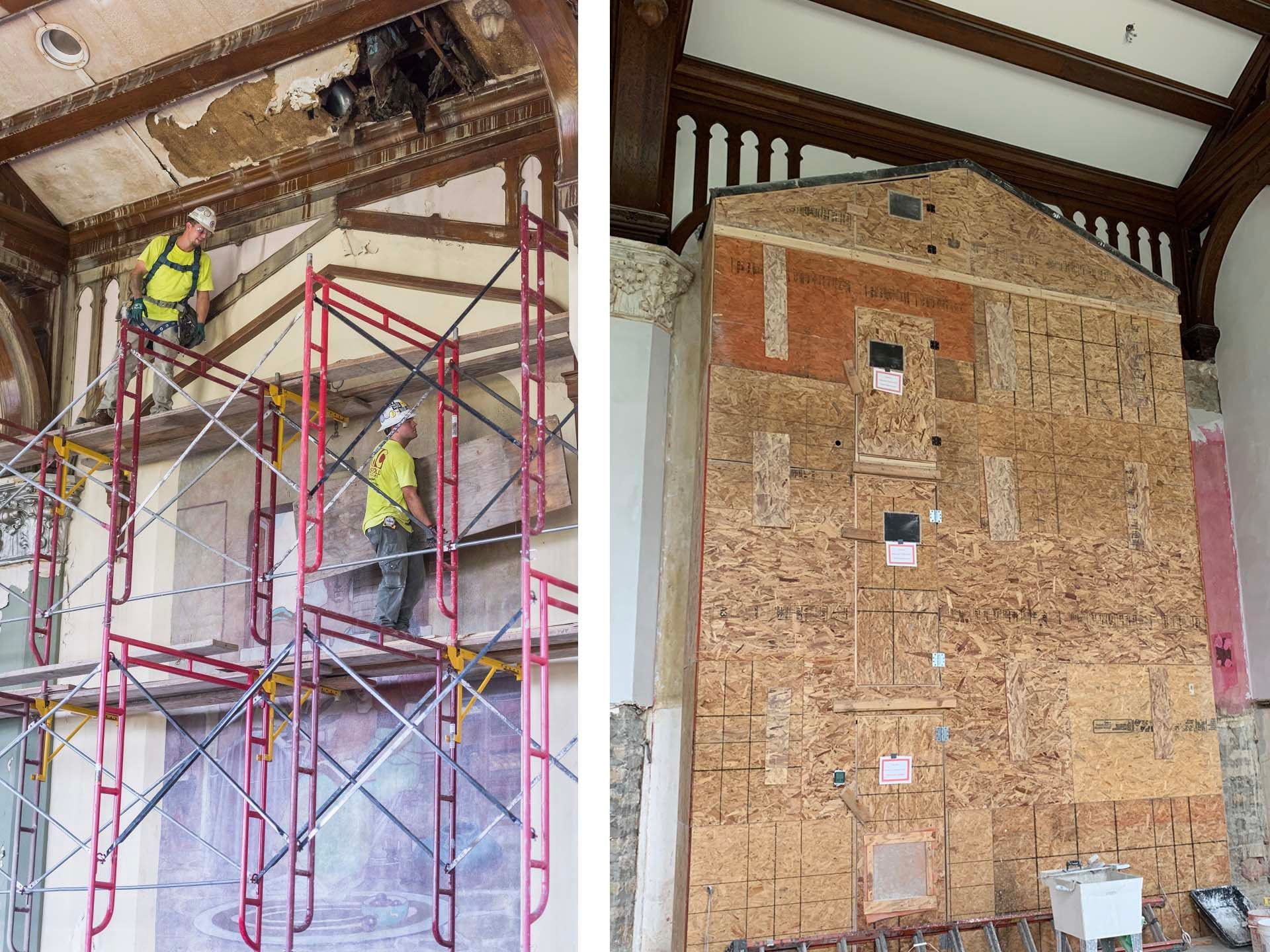
But now, two years later, the challenge lies not in finishing the restoration of Hale Library, but in preparing for what comes next.
Despite the impact of COVID-19, construction continues on Hale Library at a rapid pace. Every week, the changes at the library become more and more visible—we would say that the library is starting to look like its old self again, but that wouldn’t be true. Instead, Hale Library is beginning to look like its new best self, a mix of the historic and the future.
On the first and second floors, the Sunderland Foundation Innovation Lab begins to take shape, introducing a creative space that will open new doors for students and patrons as they tackle projects with the latest technologies. On the third floor, the historic Great Room is being restored to its former glory, but the acorn finials hanging from the ceiling are newly varnished, the murals are being repaired with the latest restoration techniques and desperately needed electrical updates flow throughout the space. Similarly, the first and second floors of Historic Farrell Library will also be restored to showcase their beautiful architectural details, but the spaces will have new purpose as they house distinctive collections and comfortable study space with plenty of natural light.


It’s these changes and more, that are beginning to reveal a next generation library.
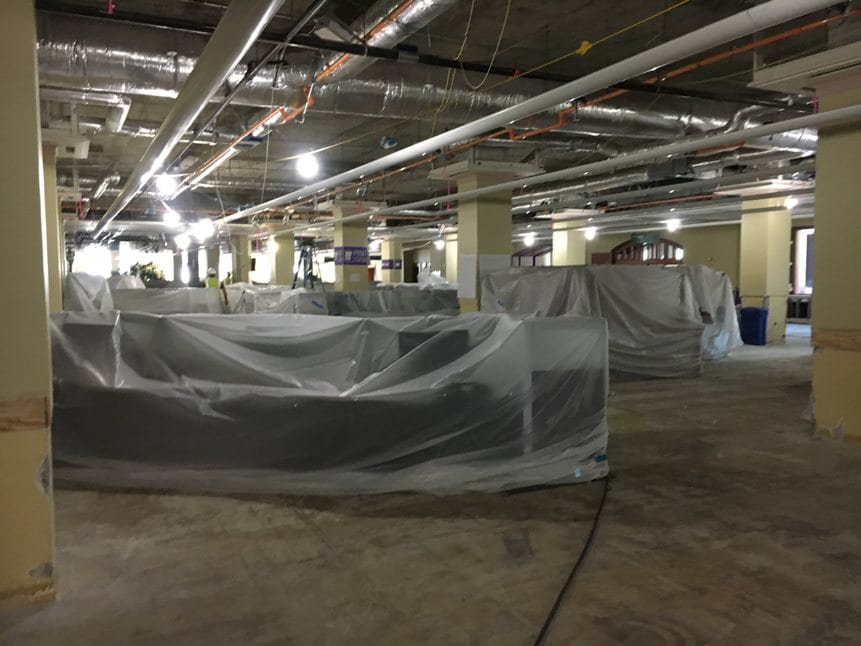


We want to say a huge thank you to the library and IT staff for their patience throughout this journey, as well as their unwavering dedication to continuing to provide quality service to the community. We also want to extend our gratitude to the entire K-State community for their endless support.
In a year from now, on the third anniversary, it’s exciting to think about what it will be like in Hale Library. By then, the full library is expected to be open to the public and students and staff will once again have a place on campus to call home. The ability to see the light at the end of the tunnel is keeping our staff, in particular, positive and resilient. We also hope that by then, life will have returned to some kind of normalcy for us all.
It hasn’t been an easy road to restore Hale Library, nor has it been a short one. But we’re confident that the results will be well worth the wait.
Kansas net farm income rose in 2019; government support again a big factor
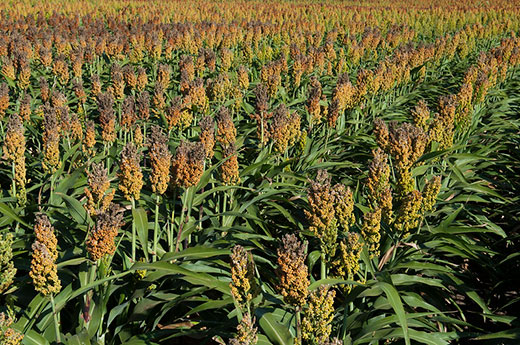 Kansas net farm income rose again in 2019, largely owing to government support payments meant to buffer the effect of trade disputes amid lackluster commodity prices, according to the annual summary by the Kansas Farm Management Association.
Kansas net farm income rose again in 2019, largely owing to government support payments meant to buffer the effect of trade disputes amid lackluster commodity prices, according to the annual summary by the Kansas Farm Management Association.
Net farm income among KFMA members averaged $110,380 in 2019, up from $101,274 a year earlier and well above the five-year average of $66,336. Net farm income has risen every year since 2015 when income plummeted to a historically low $6,744.
The data were compiled for the 2019 KFMA Executive Summary. Although not all farms are KFMA members, the numbers serve as a barometer of Kansas agriculture in any given year.
“We are continuing in a period of tight margins and cash flow constraints as we move forward into 2020,” said Kevin Herbel, KFMA executive director.
“It’s difficult to think back just a few months to before the changes brought into our lives by COVID-19,” Herbel said. “As 2019 ended, none of us had any thought of PPP or EIDL loans, or that additional unknowns and complications would impact trade agreements and influence domestic markets,” referring to financial programs designed to help small businesses, including farmers caught up in the effects of the pandemic.
“Strong yields in many parts of the state were a significant factor in 2019,” he said, citing good dryland fall crop yields in northwest and north central Kansas and impressive wheat yields in southwest areas.
Similar to a year earlier, however, the increase in 2019 net farm income was primarily linked to crop insurance and government payments made to farmers to offset the disruptive effects of trade disputes with other countries that began pre-COVID-19. The total of all government payments received by KFMA farms last year was more than 70% of net farm income. Without those payments, the 2019 average net farm income would have been $30,361 per farm.
“It just indicates the importance of a strong safety net program that allows farmers to keep producing in order to help feed the world,” said Mark Dikeman, KFMA associate director.
Farms in four areas of the state showed stronger net farm income compared with 2018. However, net farm income in south central and southeast Kansas fell compared to the prior year, at least partially because of more precipitation than usual during the critical planting and growing seasons.
Net farm income in northwest Kansas averaged $127,244 versus $116,077 a year earlier; southwest averaged $188,051 versus $153,660; north central averaged $109,961 versus $76,238; south central $70,566 versus $99,709; northeast $109,768 versus $60,944; and southeast $111,310 versus $136,916.
The KFMA summary breaks down data by type of farm, for example average dryland crop, cow herd, crops and beef. It provides comparisons against the previous four years in categories such as value of livestock produced, value of farm production, depreciation, number of workers, crop production costs/crop acre, and family living expenses.
“To get a true picture of 2019, you have to look at the fall of 2018,” said Brian Manny, KFMA economist in south central Kansas, adding that the area experienced one of the wettest Octobers in history during the normal wheat planting time that year.
Will Feldkamp, KFMA economist in north central Kansas said that area had “phenomenal wheat yields” and good soybean yields last year.
“We’re used to getting a lot of rain but had more than usual in 2019. Crops were planted late because of it,” said Dillon Rapp, KFMA economist in southeast Kansas, one of the areas where net farm income slipped from a year earlier.
In addition to this year’s weather challenges and ongoing trade issues, COVID-19 lends even more uncertainty to the financial picture for Kansas farms, Herbel said. He encourages farmers, whether KFMA members or not, to use the KFMA data as a benchmark against their own farms to identify strengths and weaknesses.
“There is much producers can’t control, but there are things they can control,” Herbel said. “A good set of records will help identify production costs, can provide a starting point for market planning, and can help a farm manager understand their farm business better than anyone else. The investment of time into this process is important to manage today’s economic environment successfully.”
More information about the KFMA is available online.
K-State Faculty Highlights
Pinkall wins 2020 American Prize in Vocal Performance
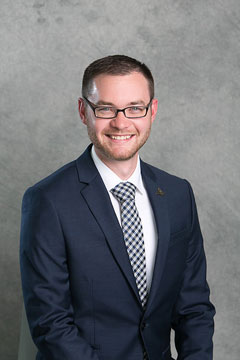 Bryan Pinkall, assistant professor of music, has won the 2020 American Prize in Vocal Performance (men's art song, professional division) for his recital production "Voices from the Western Front," performed with K-State faculty collaborative pianist, Amanda Arrington.
Bryan Pinkall, assistant professor of music, has won the 2020 American Prize in Vocal Performance (men's art song, professional division) for his recital production "Voices from the Western Front," performed with K-State faculty collaborative pianist, Amanda Arrington.
Through live art song performance, video imagery, and other immersive multimedia, "Voices from the Western Front" celebrates four artists who perished during the First World War. It includes the world premiere performance of "Flanders Triptych," a song cycle by former U.S. Army captain and K-State graduate Patrick Dittamo set to poems by Canadian John McCrae, as well as the world premiere performance of rediscovered music by composer Frederick Septimus Kelly, an Australian soldier and 1908 rowing Olympic Gold-medalist who perished in the Battle of the Somme in 1916.
The American Prize in Vocal Performance (the Friedrich and Virginia Schorr Memorial Award) annually recognizes the best performances by classically trained vocalists in the United States based on submitted commercial and non-commercial recordings.
"Voices from the Western Front" is one of a series of concerts developed by Pinkall, an Emmy and Grammy award-winning musician, that have premiered many new and rediscovered works from the First and Second World Wars at prominent performing arts centers and museums around the world since 2015, including the National World War I Museum in Kansas City, the National World War II Museum in New Orleans, the Eisenhower Presidential Library and Museum, and the Sydney Opera House. Due to the COVID-19 crisis, scheduled performances at Lincoln Center in New York City and the Kennedy Center in Washington, D.C. have been postponed to 2021.
K-State Student News
Doctoral candidate receives prestigious early career award
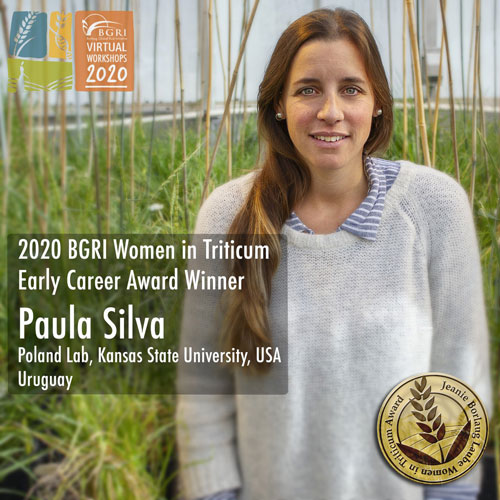 Kansas State University doctoral candidate, Paula Silva, has been named a prestigious Borlaug Global Rust Initiative 2020 Jeanie Borlaug Laube Women in Triticum Early Career Award winner. The award provides training opportunities for innovative women scientists who have demonstrated traction in increasing gender parity in agriculture.
Kansas State University doctoral candidate, Paula Silva, has been named a prestigious Borlaug Global Rust Initiative 2020 Jeanie Borlaug Laube Women in Triticum Early Career Award winner. The award provides training opportunities for innovative women scientists who have demonstrated traction in increasing gender parity in agriculture.
"Paula is an excellent young female scientist, who shows vast potential that will be realized through her hard work and dedication," said Jesse Poland, associate professor of plant pathology and Silva's doctoral advisor. "Along with her demonstrated experience and success, Paula embodies the type of young scientist that we want to cultivate and encourage in their research and career."
Silva joined Poland's lab in 2016 as a Fulbright Fellow, where her research has focused on breeding for economically important and complex diseases such as barley yellow dwarf, rusts and wheat blast.
In addition to her graduate work, in 2019 she was appointed to remotely lead the disease resistance breeding program and coordinate the Precision Wheat Phenotypic Platform for wheat diseases for INIA Uruguay — where she plans to return once completing her doctorate this year.
Join us today at 9 a.m. CDT for the interactive remote 2020 Women in Triticum Early Career and Mentor Award Celebration by registering online.
The hour-long event will feature a discussion panel titled "The Changing Face of Leadership and Research in Wheat." Poland lab alumni and for WIT awardees Sandra Dunkel, 2013, and Sarah "Battenfield" McNeil, 2014, will serve as panelists.
